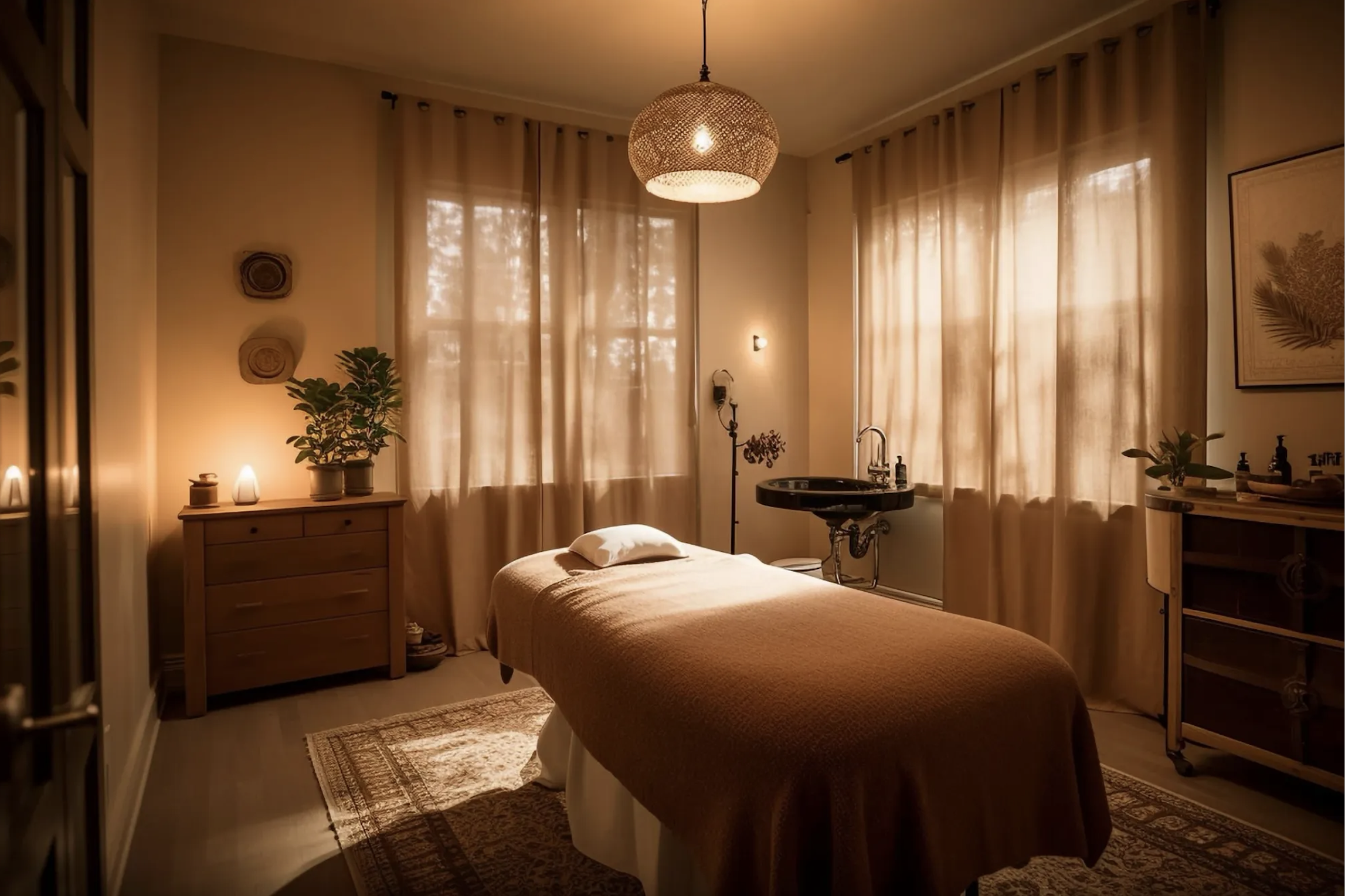Lighting Design for Massage Therapy Rooms: Illuminating the path of relaxation.
When creating a calming and therapeutic environment in a massage treatment room, lighting is one of the most powerful design tools available. Thoughtfully planned lighting can support the body’s natural rhythms, promote relaxation, and ultimately enhance the effectiveness of a massage session. By incorporating principles of biophilic and neuroaesthetic design you can create a space that truly supports the body, mind, and senses.
Biophilic design focuses on reconnecting people with nature in indoor environments. Natural lighting is one of its most impactful elements, as it aligns with the body’s circadian rhythm, the internal clock that regulates sleep-wake cycles, mood, and overall health. In a massage setting, creating a lighting scheme that mimics natural changes throughout the day—bright in the morning, dim and warm in the evening—helps clients feel in sync with these natural rhythms.
Studies in neuroaesthetics show that warmer, dim lighting promotes relaxation by signaling to the brain that it’s time to unwind. Exposure to dim, warm light has been found to lower cortisol levels and promote melatonin production, the hormone responsible for relaxation and sleep. This gentle lighting shift can calm the nervous system, deepening the client’s relaxation response and making it easier for them to experience the full therapeutic benefits of massage.
Incorporating neuroaesthetic design principles means considering how each element affects the senses and supports emotional well-being. Neuroaesthetic research has shown that lighting directly influences how people perceive and feel within a space. Massage therapists can control this sensory input by using dimmable lighting, and adjusting the brightness and warmth to create the optimal sensory environment.
Dimming lights not only creates a peaceful atmosphere but also works on a neurological level to reduce sensory overstimulation. A softer, ambient glow signals safety and relaxation to the brain, allowing clients to enter a more restful, receptive state. This sensory-driven design approach supports clients’ emotional and physical well-being, enhancing the therapeutic effect of the massage.
Sconces are space-saving and visually calming in small massage treatment rooms. They offer indirect lighting, which spreads light more evenly and eliminates harsh shadows. Neuroaesthetically, this type of diffused lighting is less likely to create visual fatigue, as it minimizes sharp contrasts and glare. It allows the eyes to relax, fostering a greater sense of comfort and safety.
Indirect lighting also mirrors the gentle way light appears in nature, aligning with biophilic principles. When light softly diffuses across the room, much like dappled sunlight through leaves, it can subconsciously evoke a sense of connection to the outdoors. This connection, even in subtle ways, reduces stress and promotes relaxation, helping clients feel enveloped in calmness.
Dimmable, warm lighting helps the eyes relax, reducing visual strain and creating a sense of comfort that lets clients fully immerse themselves in the experience. Neuroaesthetics shows that lighting influences how the brain processes an environment. Warm, indirect lighting lowers heart rate and blood pressure, contributing to a deeper sense of calm and a heightened state of relaxation. By mimicking natural light patterns, biophilic lighting can foster a sense of being in a safe, natural environment. This can lead to reduced anxiety and an increased ability to release tension during the massage.
Good lighting isn’t just about visibility—it’s about creating a sensory environment that supports relaxation, well-being, and connection to nature. By investing in dimmable lighting and thoughtfully sourced fixtures, massage therapists can enhance the holistic experience, making lighting a powerful tool in their practice.
This is a brief introduction to a very vast topic! Please tune into my conversation with Julie from The Business of Massage on November 20th for more examples and ways to improve the lighting in your treatment room, and other topics such as staging for photography and marketing, working in small spaces, and working with sound to enhance the client experience.


